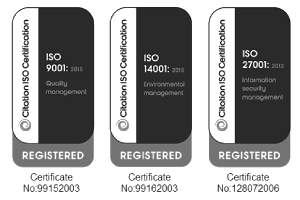East Sussex automates SEN-D transport planning with QRoutes
Results from planning one school included reducing passenger mileage to one school by 116 miles per day, saving 3.26 hours per day overall passenger travel time, cutting planning time for alternative options from hours to minutes, and estimated annual transport cost savings of £274,692.
Background
Torfield School is based in Hastings, East Sussex, and has two sites: Torfield Early Years, serving Reception and Year 1, and Torfield School serving Years 2 to 6. The sites are roughly two miles apart. The transport planning team at East Sussex organise children’s home-to-school journeys.
Finding the right route for Torfield
In 2017 the home-to-school transport for Torfield School, provided by the Council, was delivered by a single contractor. This was a three-year contract with a one-year optional extension and per day covered:
- Provision of transport across 21 routes;
- Approximately 326.4 passenger miles;
- Costing £4,402.59
The total annual cost during the academic year 2019/20 was estimated at £836,500.00 (calculated July 19).
These arrangements presented a few challenges for the Council’s planning team – not least that it needed to plan the route for each journey manually, using Google Maps. A slow process that can take an experienced planner around six to seven hours for one SEN-D school. Inevitable amendments added to this and planners didn have time to test alternative scenarios that might deliver savings or better client journeys.
Driving digital transformation
ESCC took the decision to re-tender the contract providing the Council with an opportunity to plan provision from scratch and test an automated transport planning solution.
And in mid-July 2019, East Sussex agreed to use new technology from QRoutes for route planning.
East Sussex selected QRoutes for two reasons. Firstly, QRoutes’ reputation in the market and amongst other local authorities. And secondly, because of the simplified procurement process through the G-Cloud framework.
To support the new technology, the Council consulted with the pupil groups that would share transport and as a result it agreed to use larger vehicles, and a higher staff to pupil ratio on vehicles.
Deployment
The tool was used for a re-planning exercise at Torfield School to optimise the routes for a fleet of 16 and 8-seat vehicles, with no journeys over 75 minutes. The team then made some slight manual changes to shorten the journeys for children with higher medical needs.
A school-wide planning solution was generated using QRoutes technology, and the initial plan was sent to the school for evaluation. The new QRoutes’ planning solution proposed:
- 11 routes (previously 21, saving 10 routes)
- 176.8 miles (previously 326.4 miles, saving 149.6 miles fuel and emissions)
Over the course of the summer six children left and 6 joined, all at the early years site, 4 of which didn’t fit in the original scenario. This pushed the total routes to 15. After modifying the solutions in QRoutes this resulted in:
- 15 routes (saving 6 routes)
- 210.8 miles (saving 115.6 miles fuel and emissions)
During the implementation process the school elected taxi monitors and prefects for each vehicle with three or more occupants. These children helped the on-board staff manage the group and were rewarded at school.
A new operator won the tender for a route with a 16-seat vehicle. The families and children were invited to a ‘familiarisation visit’ to meet the operator and drivers before the first day of school. A member of the council’s team was also there.
A better journey for East Sussex
Overall, the costs per day came to £2956.84, with an annual cost estimate for the 19/20 academic year of £562,000.00 [calculated during September 2019].
Robert Sullivan, Principal Transport Officer at East Sussex County Council said: “QRoutes is an extremely easy tool to use and planners have adopted its use across the transport department. The product was used to optimise routes into Torfield School across two sites showing drastic improvements in efficiency.
The initial results reduced six routes, 115.6 fewer travelled miles, 3.26 fewer travelled hours for pupils and a daily cost saving of £1445.75 – 33%.
Extrapolated across SEN-D and mainstream schools across the rest of the region, total savings are expected to exceed £1 million.”
There have also been wider benefits for the Council since it began using QRoutes. The time the planning team spent manually mapping out routes with Google Maps has been cut dramatically from hours to minutes thanks to the automation process the platform provides.
The QRoutes solution also provides reassurance to the team, offering them confidence that the route flagged really is the best option for the school and for the Council. It also makes it easy to communicate the rationale for decisions to stakeholders.
Robert concludes: “When routes have been manually planned there’s always the niggle that it could be better. But, by using QRoutes we know we will always get the most efficient output.”


.png)



.png)